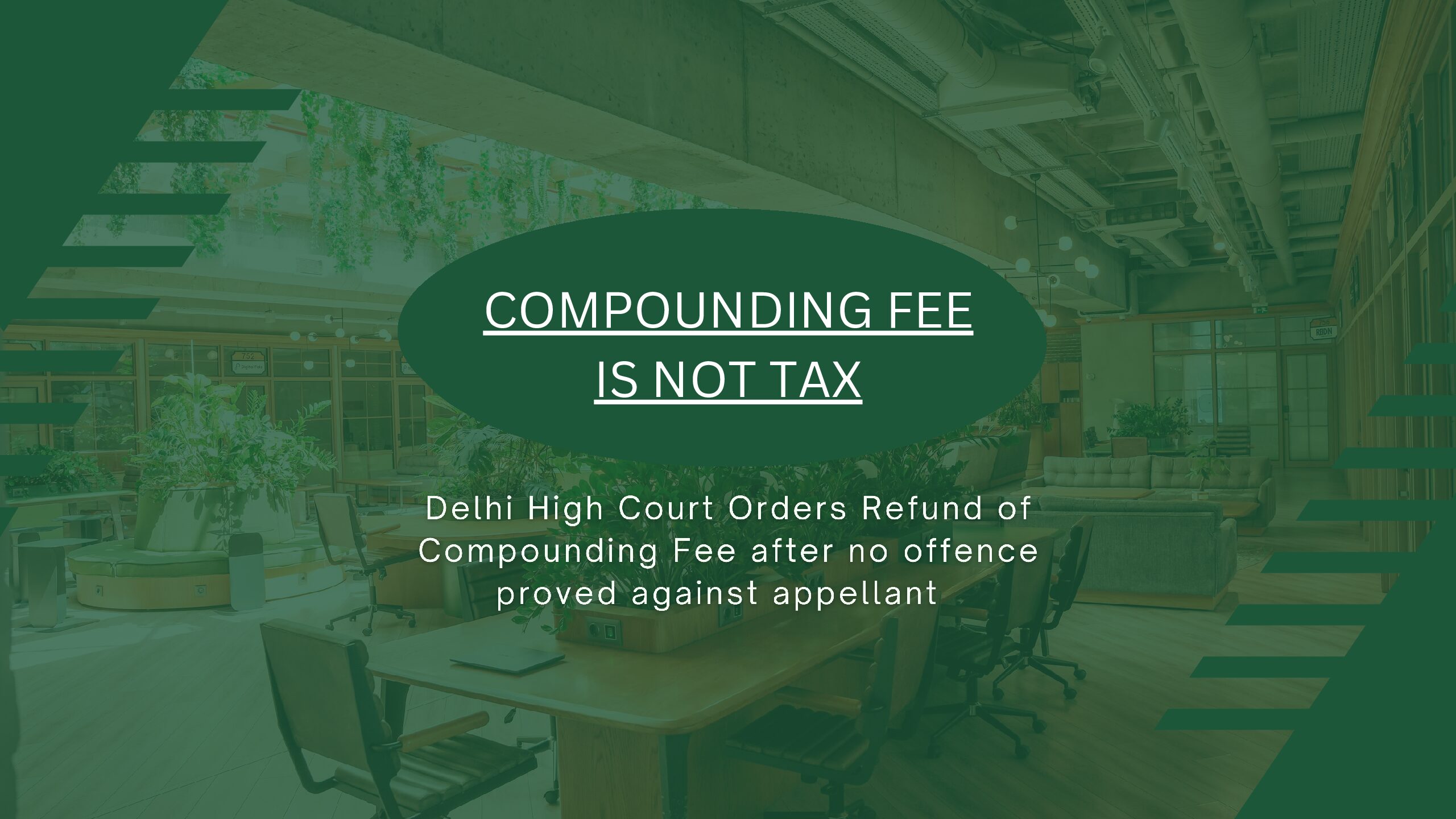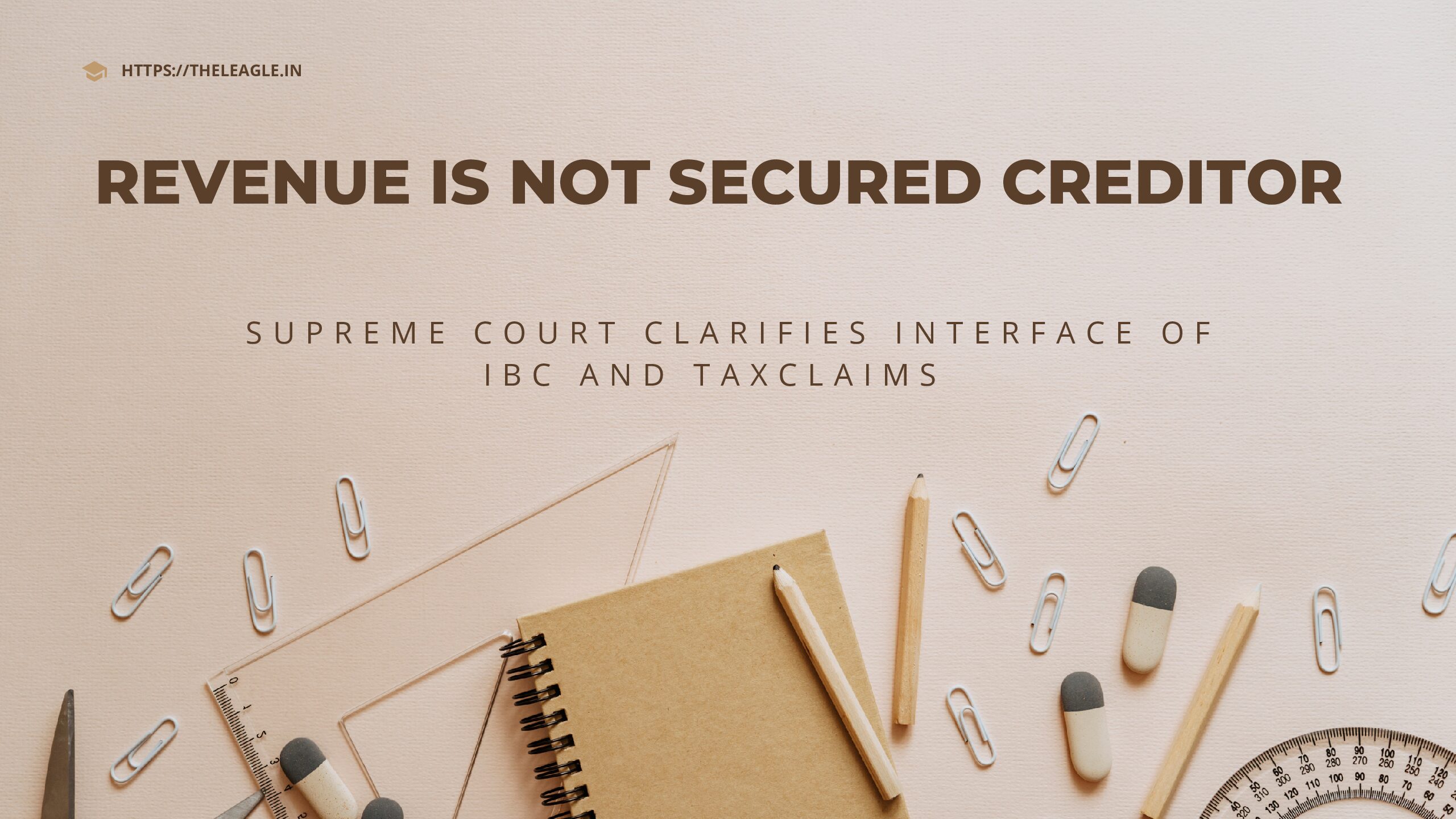Introduction
The Delhi High Court (‘High Court’) recently ruled that levy of mandatory service charge by restaurants violates customer rights. The High Court’s reasoning, anchored in consumer protection laws, termed a mandatory service charge as deceptive and misleading for consumers. The High Court also made a few casual references to tax laws. For example, the High Court took umbrage at the nomenclature of ‘service charge’ and its potential to confuse customers with a tax levied by the Government. There is merit to the High Court’s observation, but service charge and tax have a deeper connection that is only superficially referred to in the judgment. In this article, I try to scratch the surface a bit deeper.
I elaborate on two potential misgivings about service charge that the High Court’s judgment may entrench:
First, the High Court noted that addition of service charge below the cost of food followed by levy of GST in the bill, created a ‘double whammy’ for the customers. I argue that restaurants by adding service charge before calculating GST were adhering to the mandate under CGST Act, 2017. In complying with GST laws, restaurants seem to have tripped over the Consumer Protection Act, 2019. Unless there is a change in any of the two laws, restaurants are now faced with the challenge of squaring a circle.
Second, the High Court’s view that service charge can be confused for a tax prompted it to recommend that a change in nomenclature may be worth exploring. The High Court recommended that the Central Consumer Protection Authority (‘CCPA’) can permit restaurants to levy ‘tip’, ‘gratuity’, or ‘fund’ on a voluntary basis. The nomenclature issue was two-fold: first, service charge per being mistaken for a tax by customers; second, use of abbreviations by restaurants – such as ‘charge’, ‘VSC’, ‘SER’ – which further misled the customers if the levy was a mandatory levy by the State or restaurants. I query whether ‘confusion’ is the touchstone to determine if a levy by private entity should be disallowed or is its perceived mandatory nature?
GST on Food Cost + Service Charge
The High Court noted in its judgment that:
Moreover, when the bills of establishments are generated, it is noticed that the service charge is added right below the total amount of the cost of the food, followed by GST and taxes. For any consumer who does not examine the bill thoroughly, the impression given is that the service charge is a component of tax; (para 122)
The High Court’s above observation hints at two things:
one, the restaurants are trying to inflate the cost of food bill by calculating GST on the cumulative of food bill and service charge;
second, the mention of service charge just before GST creates a confusion that the former is a tax.
Let me examine the first implication in this section.
Section 15(2)(c), CGST Act, 2017 states that the value of supply of goods or services or both shall include:
incidental expenses, including commission and packing, charged by the supplier to the recipient of a supply and any amount charged for anything done by the supplier in respect of the supply of goods or services or both at the time of, or before delivery of goods or supply of services; (emphasis added)
Thus, if a restaurant was adding service charge to the food bill before computing GST, it was adhering to the mandate of GST law and not trying to ‘inflate’ the bill on its own accord. Once a restaurant decides to levy any additional charge including packing charges, etc., then as per Section 15(2)(c) it needs to be added to the total cost in a bill before computing GST. Adding all the ancillary costs ensures that the base value for calculating GST is as high as possible. Enhancing underlying value of the supply is a statutory policy aimed to enhance revenue collections, and leaves business entities such as restaurants no option to exclude charges such as service charge from the cost. One could question the statutory policy, but I doubt restaurants at fault for adding service charge to the food cost before computing GST.
In adding the service charge to food cost, as per the mandate of CGST Act, 2017, restaurants though seem to have tripped over the consumer protection law. How to ensure compliance with both? The High Court has offered a suggestion that service charge could be renamed to something that cannot be confused with a tax, though its payment should remain voluntary.
Service Charge Can be Confused With Tax
The High Court, as noted above, was concerned about mention of service charge just above GST in the restaurant bill and its potential to confuse customers former with a tax. The High Court also noted that:
In some cases, service charge is being confused with service tax or a mandatory tax imposed by the government. In fact, for the consumers, the collection of service charge is proving to be a double whammy i.e., they are forced to pay service tax and GST on the service charge as well. This position cannot be ignored by the Court. (para 123)
Latter part of the High Court’s judgment, of course, is a bit inaccurate. Service tax has been subsumed by GST since July 2017. Also, payment of GST on service charge is not a ‘double whammy’ as the High Court observes. It is, as noted above, payment of GST as per statutory mandate. It is simply, a ‘whammy’ as inclusion of service charge in value of supply though prejudices the taxpayer, is not qualitatively dissimilar from inclusion of any charges that suppliers compulsorily collect from their recipients.
The first part of the observation points out that service charge can be confused with a tax by consumers who may think they have no option but to pay it, may be misled into paying a private compulsory levy. The misleading part is on two counts, as per the High Court.
First, the mention of service charge just above GST. This can be corrected by tinkering billing software and doesn’t seem like a substantive issue that it beyond correction. One could perhaps mandate restaurants to specifically mention in the bill itself that service charge is discretionary and not a levy by the State.
Second, is the phrase ‘service charge’ itself, which gives consumers the impression that it is a tax. But will a service charge by any other name taste just as bitter? Perhaps.
Even if the CCPA permits restaurants to rename service charge to let us say a ‘tip’, it would have to be on a voluntary basis. Technically, as per CCPA guidelines, service charge was discretionary even before the Delhi High Court’s judgment. And if CCPA permits levy of ‘tip’, we would enter similar issues of restaurants arguing that the ‘tips’ are voluntary and customers can request it to be waived off while customers claiming that the voluntary nature is only a ruse. Restaurants effectively collect ‘tip’ as if it’s a mandatory charge. Equally, GST will have to levied on food cost and ‘tip’, if paid. Thus, the ‘double whammy’ may persist.
Can consumers confuse a ‘tip’ with a ‘tax’? Well, ideally, they should not confuse a service charge with a tax either. Not after July 2017, since the terms service charge and GST are not eerily similar. However, one should not take the view of a tax professional but deploy the standard of an average reasonable consumer. It is difficult to predict with mathematical certitude, but a ‘tip’ or ‘gratuity’ seems like a relatively less confusing option. If CCPA can mandate that no restaurants cannot use abbreviations or alternate names which can lead to confusion as in the case of service charge. There should be one voluntary levy and its name uniform across all restaurants.
Finally, I’m prompted to ask a question: do we mistake any other levy by private entity as a tax? Is there any comparable example?
There have been instances of conmen masquerading as tax officers, and fooling people into paying money, but I cannot think of a comparable levy where an average person has been confused that the money is not being collected by the State, but a private entity. Perhaps some people were confused if the maintenance fee paid to their resident associations was a State levy, but the confusion doesn’t seem as widespread as for service charge. The confusion seems a rather peculiar and unique problem to service charge. And one that may require an innovative solution. Though, equally possibly, restaurants may eschew the path of levying or collecting any ‘tip’ and may simply raise prices of food to compensate. Wait and watch, I guess.

